|
|
Title | Date | Type |
| 126 |
 |
This composite of a medium-sized Allosaur skull required six months of work to fully prepare the fifty or more separate elements of the skull and mandible (lower jaw). It is now in the vertebrate fossil collections of the Utah Museum of Natural History on the University of Utah campus in Salt Lake City, Utah. | 1960; 1961; 1962; 1963; 1964; 1965; 1966; 1967; 1968; 1969; 1970; 1971; 1972; 1973; 1974; 1975; 1976; 1977; 1978; 1979 | Image |
| 127 |
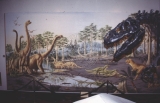 |
This fine mural was commissioned by the B.Y.U. Earth Science Museum and prepared by a noted Texas wildlife artist, Doris Tischler. The scene depicts the composite flora and fauna of Late Jurassic time in Utah as recorded in the sediments of the Morrison Formation from several Colorado Plateau localities. | 1960; 1961; 1962; 1963; 1964; 1965; 1966; 1967; 1968; 1969; 1970; 1971; 1972; 1973; 1974; 1975; 1976; 1977; 1978; 1979 | Image |
| 128 |
 |
This is a close-up photograph of a sample from the locality, where dinosaur "stomach contents" were described over three decades ago. Scientists now re-examining the site suspect that it may be a fairly large mat of fossilized vegetation, including wood fragments and seeds, and containing the bones of the sauropod dinosaur, Camarasaurus. | 1960; 1961; 1962; 1963; 1964; 1965; 1966; 1967; 1968; 1969; 1970; 1971; 1972; 1973; 1974; 1975; 1976; 1977; 1978; 1979 | Image |
| 129 |
 |
This is a view of the main interpretive exhibit, an Allosaurus, inside the Visitor Center at the Cleveland-Lloyd Dinosaur Quarry. The Center is open on a limited basis during the summer months and not at all for the rest of the year. The Quarry, Visitor Center, and picnic areas are supervised and maintained by the United States, Department of the Interior, Bureau of Land Management with the support and excavation at various times of the College of Eastern Utah, Prehistoric Museum, the Earth Science Museum at Brigham Young University, and the Utah Museum of Natural History. | 1970; 1971; 1972; 1973; 1974; 1975; 1976; 1977; 1978; 1979; 1980; 1981; 1982; 1983; 1984; 1985; 1986; 1987; 1988; 1989; 1990; 1991; 1992; 1993; 1994; 1995; 1996; 1997; 1998; 1999 | Image |
| 130 |
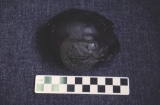 |
This is an accurate replica of the only egg discovered in the C-LD Q. It was found in a part of the quarry associated with a predominance of Allosaur bones and, very speculatively, is thought to be an egg of that most common genus in the C-LDQ. | 1960; 1961; 1962; 1963; 1964; 1965; 1966; 1967; 1968; 1969; 1970; 1971; 1972; 1973; 1974; 1975; 1976; 1977; 1978; 1979 | Image |
| 131 |
 |
This is the anterior end of the left dentary (lower jaw) of Ceratosaurus.It has two beautifully preserved teeth exposed showing the taxonomically characteristic, longitudinal grooves along the inner surfaces. Ceratosaurus is a rare, predatory dinosaur of the late Jurassic Period. There is only one of these flesh-eaters in the Cleveland-Lloyd Quarry; however, at least five others are known from various Morrison Formation exposures in the Colorado Plateau and Wyoming. Ceratosaurus is also known from the Tendaguru beds of Tanzania in east Africa. | 1960; 1961; 1962; 1963; 1964; 1965; 1966; 1967; 1968; 1969; 1970; 1971; 1972; 1973; 1974; 1975; 1976; 1977; 1978; 1979 | Image |
| 132 |
 |
This is the head skeleton and neck of Allosaurus presented in a formal garden setting by the generous lady who purchased the metal buildings, which now protect the C-LDQ excavation. | 1960; 1961; 1962; 1963; 1964; 1965; 1966; 1967; 1968; 1969; 1970; 1971; 1972; 1973; 1974; 1975; 1976; 1977; 1978; 1979 | Image |
| 133 |
 |
This life-size restoration in bronze of Albertosaurus, a common flesh- eating dinosaur from the badlands of Alberta, Canada, was sculpted by David Thomas, a talented artist from Albuquerque, New Mexico. Albertosaurus is known from Utah by tracks and teeth collected from the coal mines in Carbon and Emery Counties, but as yet no bones have been found. | 1960; 1961; 1962; 1963; 1964; 1965; 1966; 1967; 1968; 1969; 1970; 1971; 1972; 1973; 1974; 1975; 1976; 1977; 1978; 1979 | Image |
| 134 |
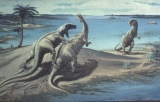 |
This oil painting by Utah artist, Gale Hammond, is his interpretation of dinosaur life at the Cleveland-Lloyd Quarry 147.5 million years ago. A large Allosaur looks on, while a second predator attacks a Camptosaur. Notice the vegetation and a ponderous sauropod dinosaur wading the shallow lake in the background. Few dinosaur Paleontologists now agree that sauropods spent much time swimming or wading, thereby risking getting mired in the mud of or adjacent to shallow bodies of water. | 1950; 1951; 1952; 1953; 1954; 1955; 1956; 1957; 1958; 1959; 1960; 1961; 1962; 1963; 1964; 1965; 1966; 1967; 1968; 1969; 1970; 1971; 1972; 1973; 1974; 1975; 1976; 1977; 1978; 1979; 1980; 1981; 1982; 1983; 1984; 1985; 1986; 1987; 1988; 1989; 1990; 1991; 1992; 1993; 1994; 1995; 1996; 1997; 1998; 1999 | Image |
| 135 |
 |
This sacrum of a Camarasaur is in the collections of the Earth Science Museum at Brigham Young University. It exhibits the same tooth mark pattern as noted on a similar bone complex collected from the C-LDQ. | 1960; 1961; 1962; 1963; 1964; 1965; 1966; 1967; 1968; 1969; 1970; 1971; 1972; 1973; 1974; 1975; 1976; 1977; 1978; 1979 | Image |
| 136 |
 |
This silhouette is part of the display in the Visitor Center, which shows the place in time of the C-LDQ dinosaurs. | 1960; 1961; 1962; 1963; 1964; 1965; 1966; 1967; 1968; 1969; 1970; 1971; 1972; 1973; 1974; 1975; 1976; 1977; 1978; 1979 | Image |
| 137 |
 |
This speaker is unidentified - may be a B.L.M. official. | 1960; 1961; 1962; 1963; 1964; 1965; 1966; 1967; 1968; 1969; 1970; 1971; 1972; 1973; 1974; 1975; 1976; 1977; 1978; 1979 | Image |
| 138 |
 |
This thin-section of bone from an Allosaurus radius shows a classic alternation of lamellated annuli and non-lamellated zones, confirming the presence of true zonal bone in Allosaurus. Photo and slide were prepared and described by Researcher, Dr. Robin Reid. Magnification X 100. | 1960; 1961; 1962; 1963; 1964; 1965; 1966; 1967; 1968; 1969; 1970; 1971; 1972; 1973; 1974; 1975; 1976; 1977; 1978; 1979 | Image |
| 139 |
 |
This view of the Cleveland-Lloyd Dinosaur Quarry (C-LDQ) in Emery County, Utah is typical of the primitive landscape and isolated areas, where many of Utah's dinosaurs are found and collected. | 1950; 1951; 1952; 1953; 1954; 1955; 1956; 1957; 1958; 1959; 1960; 1961; 1962; 1963; 1964; 1965; 1966; 1967; 1968; 1969; 1970; 1971; 1972; 1973; 1974; 1975; 1976; 1977; 1978; 1979; 1980; 1981; 1982; 1983; 1984; 1985; 1986; 1987; 1988; 1989; 1990; 1991; 1992; 1993; 1994; 1995; 1996; 1997; 1998; 1999 | Image |
| 140 |
 |
Three-dimensional, life-size models are very popular in many dinosaur exhibits around the world. Among the best are those to be seen at the Utah Fieldhouse of Natural History, a museum in Vernal, Utah. Triceratops is seen in the foreground of this photograph taken shortly after a Utah winter snow storm. | 1960; 1961; 1962; 1963; 1964; 1965; 1966; 1967; 1968; 1969; 1970; 1971; 1972; 1973; 1974; 1975; 1976; 1977; 1978; 1979 | Image |
| 141 |
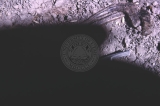 |
Two dorsal ribs, Allosaurus. | 1950; 1951; 1952; 1953; 1954; 1955; 1956; 1957; 1958; 1959; 1960; 1961; 1962; 1963; 1964; 1965; 1966; 1967; 1968; 1969; 1970; 1971; 1972; 1973; 1974; 1975; 1976; 1977; 1978; 1979; 1980; 1981; 1982; 1983; 1984; 1985; 1986; 1987; 1988; 1989; 1990; 1991; 1992; 1993; 1994; 1995; 1996; 1997; 1998; 1999 | Image |
| 142 |
 |
Two humeri from different sizes of Allosaurus. Large one is right side and small one is left side. | 1960; 1961; 1962; 1963; 1964; 1965; 1966; 1967; 1968; 1969; 1970; 1971; 1972; 1973; 1974; 1975; 1976; 1977; 1978; 1979 | Image |
| 143 |
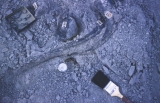 |
Two ribs and caudal vertebrae, Allosaurus (UUVP 0261, 0106, 0012). | 1950; 1951; 1952; 1953; 1954; 1955; 1956; 1957; 1958; 1959; 1960; 1961; 1962; 1963; 1964; 1965; 1966; 1967; 1968; 1969; 1970; 1971; 1972; 1973; 1974; 1975; 1976; 1977; 1978; 1979; 1980; 1981; 1982; 1983; 1984; 1985; 1986; 1987; 1988; 1989; 1990; 1991; 1992; 1993; 1994; 1995; 1996; 1997; 1998; 1999 | Image |
| 144 |
 |
Uncommon association of two articulating limb elements, femur and tibia of Allosaurus (UUVP 0826, 0827). | 1950; 1951; 1952; 1953; 1954; 1955; 1956; 1957; 1958; 1959; 1960; 1961; 1962; 1963; 1964; 1965; 1966; 1967; 1968; 1969; 1970; 1971; 1972; 1973; 1974; 1975; 1976; 1977; 1978; 1979; 1980; 1981; 1982; 1983; 1984; 1985; 1986; 1987; 1988; 1989; 1990; 1991; 1992; 1993; 1994; 1995; 1996; 1997; 1998; 1999 | Image |
| 145 |
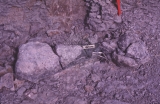 |
Unidentified. | 1950; 1951; 1952; 1953; 1954; 1955; 1956; 1957; 1958; 1959; 1960; 1961; 1962; 1963; 1964; 1965; 1966; 1967; 1968; 1969; 1970; 1971; 1972; 1973; 1974; 1975; 1976; 1977; 1978; 1979; 1980; 1981; 1982; 1983; 1984; 1985; 1986; 1987; 1988; 1989; 1990; 1991; 1992; 1993; 1994; 1995; 1996; 1997; 1998; 1999 | Image |
| 146 |
 |
Vertebrae, ischium, and tibia, Camarasaurus (?) (UUVP 2426-tibia). | 1950; 1951; 1952; 1953; 1954; 1955; 1956; 1957; 1958; 1959; 1960; 1961; 1962; 1963; 1964; 1965; 1966; 1967; 1968; 1969; 1970; 1971; 1972; 1973; 1974; 1975; 1976; 1977; 1978; 1979; 1980; 1981; 1982; 1983; 1984; 1985; 1986; 1987; 1988; 1989; 1990; 1991; 1992; 1993; 1994; 1995; 1996; 1997; 1998; 1999 | Image |
| 147 |
 |
Vertebrae, ribs, etc., Allosaurus (UUVP 0012, 0106, 0261, 0262, 0267). | 1950; 1951; 1952; 1953; 1954; 1955; 1956; 1957; 1958; 1959; 1960; 1961; 1962; 1963; 1964; 1965; 1966; 1967; 1968; 1969; 1970; 1971; 1972; 1973; 1974; 1975; 1976; 1977; 1978; 1979; 1980; 1981; 1982; 1983; 1984; 1985; 1986; 1987; 1988; 1989; 1990; 1991; 1992; 1993; 1994; 1995; 1996; 1997; 1998; 1999 | Image |
| 148 |
 |
View from above, looking south(?). | 1950; 1951; 1952; 1953; 1954; 1955; 1956; 1957; 1958; 1959; 1960; 1961; 1962; 1963; 1964; 1965; 1966; 1967; 1968; 1969; 1970; 1971; 1972; 1973; 1974; 1975; 1976; 1977; 1978; 1979; 1980; 1981; 1982; 1983; 1984; 1985; 1986; 1987; 1988; 1989; 1990; 1991; 1992; 1993; 1994; 1995; 1996; 1997; 1998; 1999 | Image |
| 149 |
 |
View of the sizeable crowd turned out for the dedication. | 1960; 1961; 1962; 1963; 1964; 1965; 1966; 1967; 1968; 1969; 1970; 1971; 1972; 1973; 1974; 1975; 1976; 1977; 1978; 1979 | Image |
| 150 |
 |
The Visitor Center at the C-LDQ, which became a United States Natural Landmark in 1968, has some interesting graphics that interpret and detail the operation and history of the Quarry. Included in the exhibits are some prepared, original dinosaur bones, and a mounted free- standing skeleton of a medium-sized Allosaur, which consists of less than 50% of the original, fossil bones. The skull of the Allosaur can be seen through the window in the front of the building. | 1970; 1971; 1972; 1973; 1974; 1975; 1976; 1977; 1978; 1979; 1980; 1981; 1982; 1983; 1984; 1985; 1986; 1987; 1988; 1989; 1990; 1991; 1992; 1993; 1994; 1995; 1996; 1997; 1998; 1999 | Image |